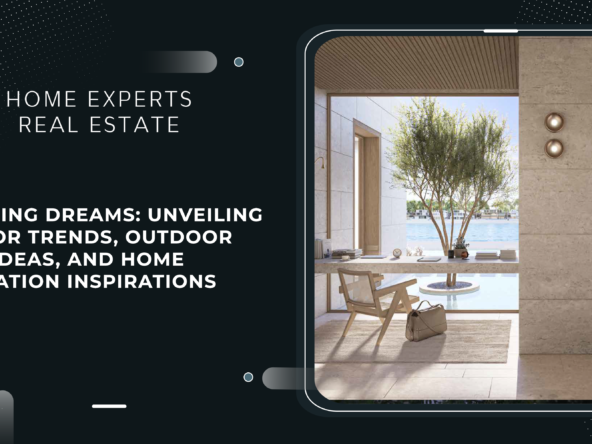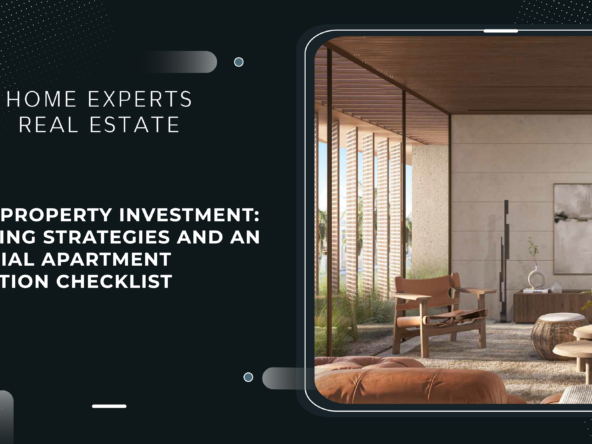At the intersection of conscious choices and environmental stewardship lies the transformative concept of sustainable living. This philosophy transcends the conventional boundaries of lifestyle, urging individuals to reevaluate their daily practices for the betterment of our planet. Sustainable living involves adopting practices that minimize environmental impact, ensuring the well-being of both current and future generations. The significance of this ethos resonates across three pivotal dimensions: environmental, economic, and health. By embracing sustainable living practices, individuals contribute to the preservation of ecosystems, reduce their carbon footprint, and mitigate the effects of climate change. Economically, it encourages resource efficiency and cost savings. On the health front, sustainable living fosters cleaner air, water, and a holistic well-being, creating a symbiotic relationship between personal choices and the health of our planet. In exploring sustainable living solutions, we embark on a journey towards a harmonious coexistence with nature.
Holistic Harmony: Sustainable Living Solutions for a Greener Tomorrow
Sustainable living solutions weave a tapestry of conscientious practices aimed at preserving our planet’s vitality. In the realm of energy conservation, simple yet impactful measures like adopting energy-efficient appliances, optimizing home insulation, and harnessing renewable energy sources contribute to a reduced carbon footprint. Waste reduction takes center stage by embracing the principles of recycling, composting, and mindful consumption, fostering a circular economy that minimizes landfill contributions. Furthermore, water efficiency becomes a paramount consideration, encouraging the use of water-saving fixtures, rainwater harvesting, and responsible irrigation practices. Collectively, these eco-friendly practices not only diminish environmental strain but also serve as a blueprint for responsible living. Sustainable living solutions empower individuals to be stewards of change, fostering a harmonious relationship between daily habits and the well-being of our precious ecosystems.
| PRODUCT CATEGORY | INNOVATIVE & SUSTAINABLE PRODUCTS |
| Kitchenware | 1. Bamboo Utensils: Biodegradable and renewable alternatives to plastic. |
| 2. Beeswax Wraps: Reusable and eco-friendly alternative to plastic wraps. | |
| 3. Stainless Steel Straws: Durable, reusable, and a plastic straw alternative. | |
| 4. Compostable Plates: Made from materials like sugarcane, offering an eco-friendly disposable option. | |
| Furniture | 1. Bamboo Furniture: Sustainable, fast-growing bamboo as an alternative to traditional wood. |
| 2. Recycled Plastic Furniture: Creative use of recycled plastic for outdoor furniture. | |
| 3. Upcycled Furniture: Repurposed materials turned into unique, sustainable furniture pieces. | |
| 4. Cork-Based Home Décor: Lightweight and renewable material for various household items. |
These innovative and sustainable products align with the principles of eco-friendly living, promoting conscious choices for a greener and more sustainable home.

Building Tomorrow: Sustainable Living Solutions in Architecture and Design
In the pursuit of sustainable living solutions, the realm of architecture and design emerges as a transformative force, reshaping the landscape of our homes for a greener tomorrow. Sustainable architecture embraces a holistic approach, integrating principles that prioritize energy efficiency, resource conservation, and environmental harmony. Passive design techniques, such as maximizing natural light and ventilation, reduce reliance on artificial energy sources. Furthermore, the choice of environmentally conscious construction materials becomes paramount. From recycled steel and reclaimed wood to innovative materials like bamboo and cork, green homes minimize their ecological footprint. Embracing methods such as modular construction and prefabrication streamlines processes, reducing waste and construction time. As we explore sustainable living solutions in architecture, we forge a path toward homes that not only shelter but actively contribute to a harmonious coexistence with the environment, embodying the essence of sustainable living solutions.
Powering Progress: Sustainable Living Solutions with Renewable Energy
In the evolution towards sustainable living solutions, the integration of renewable energy sources into residential landscapes marks a pivotal stride towards a cleaner and greener future. The adoption of solar panels and wind turbines has become synonymous with a commitment to reducing carbon footprints and embracing eco-friendly practices. Solar panels harness the sun’s energy to generate electricity, offering not only a clean power source but also substantial cost savings over time. Similarly, wind turbines convert wind energy into electricity, providing a reliable and sustainable alternative. Beyond the evident environmental benefits of reduced greenhouse gas emissions, embracing renewable energy translates into significant long-term cost savings for homeowners. As we weave renewable energy into the fabric of our homes, we not only contribute to a more sustainable future but also pave the way for a resilient and cost-effective approach to energy consumption. Sustainable living solutions, anchored in renewable energy, illuminate the path towards a harmonious coexistence with our planet.

Navigating Choices: Buying vs. Renting Homes – A Comprehensive Exploration
The decision to buy or rent a home is a multifaceted journey that demands careful consideration from both financial and environmental standpoints. Buying Homes offers the allure of long-term stability and potential equity, making it a considerable investment. However, it entails substantial upfront costs, ongoing maintenance responsibilities, and the market’s unpredictable fluctuations. On the other hand, Renting Homes provides flexibility, fewer financial obligations, and the opportunity to live in diverse locations without the burden of ownership. Yet, it lacks the potential wealth accumulation that homeownership may bring. From an environmental lens, buying a home might necessitate resource-intensive construction and contribute to urban sprawl, while renting may offer a more resource-efficient use of existing structures. Weighing the pros and cons of buying versus renting becomes a nuanced evaluation, demanding a careful examination of personal circumstances, financial goals, and the environmental impact of these significant housing decisions.
Ownership for the Long Run: Sustainable Considerations of Owning Property
Owning a property involves a profound commitment that extends beyond immediate comforts, delving into the realm of long-term sustainability. A critical consideration lies in the environmental impact associated with property ownership, including resource consumption, energy use, and the property’s overall ecological footprint. Sustainable practices, such as investing in energy-efficient appliances, adopting renewable energy sources, and implementing water conservation measures, contribute to the property’s long-term environmental sustainability. Additionally, the durability and resilience of eco-friendly construction materials can minimize the need for frequent renovations, fostering a more sustainable, long-lasting structure. Engaging in responsible land management, promoting green spaces, and implementing waste reduction strategies further underscore the commitment to lasting sustainability. As property owners, recognizing the enduring impact of our choices and incorporating sustainable practices becomes not only a responsible choice but a legacy of mindful living for the benefit of future generations.
Green Havens: Sustainable Living Solutions in Model Communities
Model communities that champion sustainable living solutions present a compelling narrative of harmonious coexistence with the environment. These neighborhoods prioritize green spaces, incorporating parks, community gardens, and nature reserves to create a symbiotic relationship between urban living and nature. Energy efficiency takes center stage with innovative construction techniques, renewable energy integration, and eco-conscious architectural designs. Choosing to reside in such neighborhoods transcends the traditional debate of buying vs. renting homes, as both homeowners and renters benefit from shared sustainability initiatives. Residents experience a higher quality of life with improved air quality, reduced noise pollution, and enhanced overall well-being. Communal commitment to eco-conscious practices fosters a sense of belonging and collective responsibility. Beyond the personal advantages, these sustainable communities serve as living proof that a harmonious blend of nature and urban living is not only achievable but imperative for a resilient and sustainable future.
Green Finances: Unpacking the Economics of Sustainable Living Solutions
Embarking on a journey towards sustainable living solutions involves a nuanced examination of the financial landscape, addressing both immediate costs and long-term savings. While the upfront costs of adopting green practices may pose a consideration, the long-term financial benefits are often substantial. Energy-efficient upgrades, such as solar panels or energy-efficient appliances, may require initial investments but promise significant utility bill savings over time. In the context of the perennial debate on buying vs. renting homes, homeowners stand to gain from increased property value through sustainable improvements.
Moreover, governments worldwide recognize the importance of sustainable living and offer incentives and programs to encourage eco-friendly choices. Tax credits, rebates, and grants for energy-efficient renovations or renewable energy installations alleviate upfront costs. Local municipalities may also promote sustainable practices through zoning regulations, encouraging environmentally conscious construction and landscaping. As we navigate the financial intricacies of sustainable living, it becomes evident that the initial investment pales in comparison to the long-term gains in both financial savings and environmental well-being.
Case Studies and Success Stories
- The Sustainable City:
-
-
- Located in Dubai, The Sustainable City is an exemplary community designed to be a net-zero development. It integrates renewable energy sources, waste recycling, and sustainable transportation. The city aims to produce more energy than it consumes, emphasizing eco-friendly living practices.
-
- Masdar City:
-
-
- Though technically in Abu Dhabi, Masdar City is a sustainable urban development backed by the UAE government. It focuses on renewable energy, energy efficiency, and sustainable transportation. While not fully completed, it serves as a model for sustainable urban planning in the region.
-
- Dubai Sustainable Tourism Initiatives:
-
-
- Dubai has implemented various green initiatives in its tourism sector, encouraging hotels and resorts to adopt sustainable practices. Many establishments have incorporated energy-efficient technologies, waste reduction measures, and water-saving systems to minimize their environmental impact.
-
- Sustainable Villas:
-
- Several residential projects in Dubai have incorporated sustainable features in their designs. This includes energy-efficient lighting, solar panels, and water-saving technologies. These homes showcase how sustainable living can be seamlessly integrated into everyday life.
It’s essential to note that Dubai is actively working towards a more sustainable future, and new initiatives may have been implemented since my last update. For the latest and specific examples, it’s recommended to check local news, government announcements, or official sustainability reports.
Tips for Green Renting
- Energy Efficiency:
- Switch to LED Bulbs: Replace incandescent bulbs with energy-efficient LED lights.
- Unplug Electronics: Turn off and unplug electronic devices when not in use to save energy.
- Use Energy Star Appliances: If possible, choose appliances with the Energy Star label for better energy efficiency.
- Waste Reduction:
- Embrace Recycling: Separate recyclables and dispose of them according to local recycling guidelines.
- Composting: Explore indoor composting options for food scraps to reduce kitchen waste.
- Say No to Single-Use Plastics: Minimize the use of single-use plastics and opt for reusable alternatives.
- Water Conservation:
- Fix Leaks Promptly: Report and repair any water leaks promptly to conserve water.
- Install Water-Saving Devices: Consider using water-saving devices such as low-flow faucets and showerheads.
- Collect Rainwater: If permissible, collect rainwater for watering plants.
- Green Purchasing:
- Choose Sustainable Products: Opt for eco-friendly and sustainable products when furnishing or decorating your space.
- Secondhand Furniture: Consider buying secondhand furniture to reduce the demand for new manufacturing.
- Outdoor Spaces:
- Container Gardening: If space allows, engage in container gardening for herbs or small plants.
- Choose Native Plants: If you have outdoor space, choose native plants that require less water and maintenance.
- Community Engagement:
- Advocate for Sustainability: Encourage property management to adopt sustainable practices within the community.
- Participate in Green Initiatives: Join or initiate community efforts for waste reduction, recycling, or energy-saving initiatives.
- Educate and Inspire:
- Share Information: Share information with neighbors about sustainable practices and their benefits.
- Lead by Example: Showcase your eco-friendly choices to inspire others in your community.
Renters may not have the same level of control as homeowners, but these small changes collectively contribute to a more sustainable living environment.
Conclusion – Elevate Your Lifestyle with Sustainable Living Solutions: A Green Guide for Home Choices
In the pursuit of a greener, more sustainable lifestyle, the journey towards sustainable living solutions emerges as a beacon of conscientious choices. From energy-efficient practices and waste reduction to embracing eco-friendly homes and communities, the commitment to sustainability extends across myriad aspects of daily living. For those contemplating the age-old dilemma of buying vs. renting homes, the landscape transforms into an opportunity for eco-conscious decision-making. Owning a property allows for substantial, personalized green upgrades, yet renting unveils a path of flexibility, reduced maintenance responsibilities, and often, immediate eco-friendly amenities.
Amidst these considerations, the key lies in striking a balance that aligns with individual values and environmental stewardship. Sustainable living solutions empower renters and homeowners alike to curate eco-friendly spaces, fostering a harmonious coexistence with nature. As we navigate this green terrain, the decision between buying and renting evolves beyond financial aspects, encompassing a profound commitment to environmental sustainability.
For personalized guidance on making eco-friendly home choices or exploring sustainable living options, connect with our Home Experts team at https://homeexpertsre.com/contact/. Your journey towards a greener, more sustainable lifestyle begins with informed choices. Join us in building a future where every home is a testament to mindful living and environmental respect.





